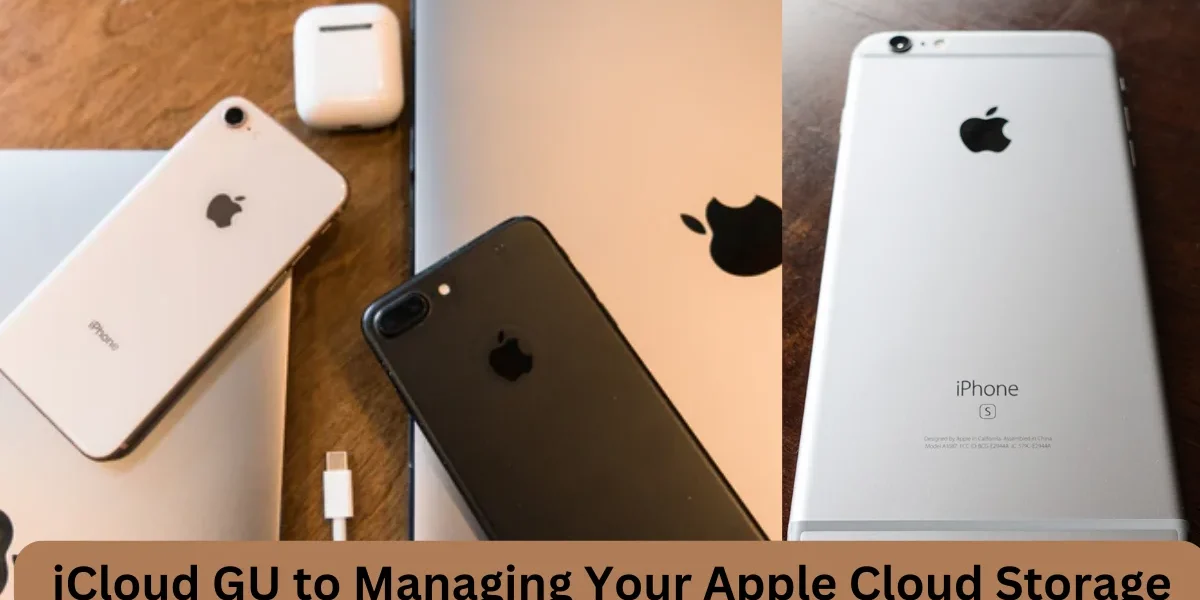iCloud is Apple’s cloud storage and iCloud GU computing service, designed to seamlessly integrate with all Apple devices, including iPhones, iPads, Macs, and even Windows PCs. Whether you’re storing photos, documents, backups, or app data, iCloud ensures that your content is always accessible, up-to-date, and secure across all your Apple devices. One of the most important features of iCloud is the iCloud GU (iCloud Global User interface), which provides users with a centralized hub for managing all their cloud-based content.
In this comprehensive guide, we will explore the ins and outs of iCloud GU, helping you understand how to effectively manage your Apple cloud storage and get the most out of the service.
Understanding iCloud GU?
The term “iCloud GU” refers to the global user interface that users interact with when managing their iCloud storage. While iCloud has been around for over a decade, the iCloud GU is the streamlined system that brings everything together, enabling users to manage their storage in a more intuitive and user-friendly way. It allows you to access, organize, and optimize your files, backups, and settings across all your Apple devices, from iPhones to Macs.
Whether you’re dealing with limited storage or looking to optimize your usage, the iCloud GU interface offers the tools to monitor your data, upgrade your storage, or troubleshoot common issues. The iCloud GU can be accessed via the iCloud settings on your Apple device or by visiting iCloud.com in a browser.
Setting Up iCloud GU
Before you can dive into managing your iCloud storage, you’ll need to set up iCloud on your Apple device. Here’s how:
1. iCloud Setup on iPhone or iPad:
- Open Settings on your iPhone or iPad.
- Tap your Apple ID at the top of the Settings menu (this should be your name and profile picture).
- Tap iCloud.
- Toggle the apps and services you want to store in iCloud, such as Photos, Contacts, Calendars, Safari, Notes, and more.
- If you haven’t already, you’ll be prompted to sign in with your Apple ID.
2. iCloud Setup on Mac:
- Open System Preferences on your Mac.
- Click on Apple ID and select iCloud.
- Check the box next to the services you wish to enable.
- If you’re not signed in, enter your Apple ID credentials.
3. iCloud Setup on Windows:
- Download and install iCloud for Windows from Apple’s official website.
- Sign in using your Apple ID.
- Select the iCloud services (such as Photos, Mail, and Calendar) you wish to sync.
- Click Apply to finish the setup.
After setting up iCloud, your data will automatically begin syncing across all connected devices.
Understanding iCloud GU Storage Plans
iCloud offers 5GB of free storage, which is shared across iCloud services such as backups, photos, documents, and emails. However, many users quickly run out of the free space. This is where the iCloud GU comes into play, allowing you to manage your available storage effectively.
iCloud Storage Plans:
- 5GB: Free.
- 50GB: $0.99/month.
- 200GB: $2.99/month.
- 2TB: $9.99/month.
The 200GB and 2TB plans also support family sharing, allowing you to share your storage with up to six family members.
You can easily manage your iCloud storage through the iCloud GU interface, monitor your usage, and upgrade your plan as needed.
Also Read : FCI HRMS Login | Mepro Pearson Login | Hoichoi Login
Managing iCloud GU Storage
Once iCloud is set up and running, the iCloud GU provides several tools for managing your storage. Here’s how to keep your iCloud account running smoothly:
1. View and Manage Storage Usage:
To view your iCloud storage usage:
On iPhone/iPad:
- Open Settings.
- Tap your Apple ID, then iCloud.
- Tap Manage Storage to see a breakdown of what is using up your iCloud storage, such as iCloud Backup, Photos, Documents, etc.
On Mac:
- Open System Preferences.
- Click Apple ID, then select iCloud.
- Click Manage to view your storage usage.
You’ll see a list of all the services using iCloud storage and how much space each one is consuming. This is where you can decide to delete old backups, optimize your photo storage, or clear out unused apps to free up space.
2. Freeing Up Space:
- Optimize iPhone Storage: On your iPhone, you can choose to Optimize iPhone Storage under iCloud Photos. This setting will keep only smaller versions of your photos on the device and store the full-resolution versions in iCloud. This can significantly save space on your device.
- Delete Old Backups: You may have multiple device backups in iCloud, some of which may be outdated. In the Manage Storage section, you can delete old backups to reclaim storage.
- Clear Out Unnecessary Documents: Apps like iWork and other cloud-enabled apps store documents in iCloud. If you don’t need them anymore, go to the Files app or iCloud Drive and delete unnecessary documents.
3. Reviewing App Data:
Sometimes, apps accumulate a lot of data in iCloud. You can review and delete individual app data in the Manage Storage section. Be mindful when deleting data associated with apps, as this could result in losing information that might not be recoverable.
iCloud GU Backup Management
One of the key benefits of iCloud is the ability to automatically back up your iOS devices. The iCloud GU allows you to manage your backups efficiently.
1. Managing iCloud Backups:
- Turn On/Off iCloud Backup: Go to Settings > Apple ID > iCloud > iCloud Backup and toggle the switch to enable or disable backups.
- View Backup Size and Date: In the Manage Storage section, you can see the size of your backup and the date it was last performed.
- Delete Old Backups: If you have multiple devices or outdated backups, you can delete old backups to free up space.
2. Restoring from iCloud Backup:
If you ever need to restore your device from an iCloud backup, you can do so during the setup process after resetting your device. Just sign in with your Apple ID and choose the appropriate backup.
Managing iCloud GUPhotos
iCloud Photos allows you to store all your photos and videos in the cloud, ensuring that they’re accessible across all devices. The iCloud GU provides several options for managing your photo library:
1. Optimize Storage:
Enable Optimize iPhone Storage in Settings > Photos to save local storage on your device. Your full-resolution photos will be stored in iCloud, while smaller versions are kept on your device.
2. Organize Photos in iCloud:
Use the Photos app on your iPhone, iPad, or Mac to organize your photos into albums. You can also access all your photos via iCloud.com.
3. Shared Albums:
Create Shared Albums to share selected photos with friends and family. This feature is accessible via the Photos app and iCloud.com.
iCloud Drive and File Management
iCloud Drive is Apple’s cloud-based file storage system. It enables you to store documents, presentations, and other files in the cloud and access them from any device.
1. Accessing Files:
You can access your iCloud Drive documents on your Mac, iPhone, iPad, or PC. Simply open the Files app (on iOS) or Finder (on Mac), then navigate to the iCloud Drive folder.
2. Organizing Files:
You can organize files into folders, and iCloud Drive supports a variety of file types. iCloud also syncs with third-party apps, allowing you to access files from apps like Microsoft Word, Google Docs, and more.
3. Sharing Files:
You can easily share iCloud Drive files by right-clicking on them (on Mac) or using the Share option in the Files app (on iOS).
Troubleshooting iCloud GU Issues
Like any cloud service, iCloud can occasionally encounter issues. Here are some common problems and their solutions:
- Storage Full: If you see a message indicating that your storage is full, check which apps or services are consuming the most storage. You may need to delete old backups, photos, or documents.
- iCloud Syncing Problems: If your files aren’t syncing, ensure that you have a stable internet connection and that iCloud services are enabled on your device.
- Forgot iCloud Password: If you forget your Apple ID password, you can reset it through Apple’s website or the Apple ID app.
Also Read : Exotel Login | MDRC Login | Shaladarpan Staff Login
Conclusion
The iCloud GU is an essential tool for anyone using Apple’s ecosystem, offering seamless management of your cloud storage and data. Whether you’re backing up your iPhone, storing documents in iCloud Drive, or organizing photos, the iCloud GU provides a straightforward interface for all your cloud-based tasks. By understanding how to optimize your storage, organize your content, and manage backups, you can make the most of iCloud’s powerful features while keeping your Apple devices synced and running smoothly.
FAQs for “iCloud GU
1. What is iCloud and how does it work?
iCloud is Apple’s cloud storage service that securely stores your photos, files, notes, passwords, and other data. It keeps your information up to date across all your devices automatically, making it easy to access your data from anywhere
2. How much free storage do I get with iCloud?
When you set up iCloud, you automatically receive 5GB of free storage. This space can be used for backups, photos, documents, and more. If you need additional storage, you can upgrade to iCloud+ for more options
3. How can I manage my iCloud storage effectively?
To manage your iCloud storage, you can view and delete unnecessary files, disable syncing for apps you don’t use, and check your storage levels in the settings. This helps free up space for the data you want to keep
4. Can I upgrade my iCloud storage plan?
Yes, you can upgrade your iCloud storage plan to options ranging from 50GB to 12TB. This allows you to choose a plan that fits your storage needs
5. What should I do if my iCloud storage is full?
If your iCloud storage is full, consider deleting unwanted files, optimizing photo storage, or upgrading your storage plan. You can also manage your storage by checking which apps are using the most space












